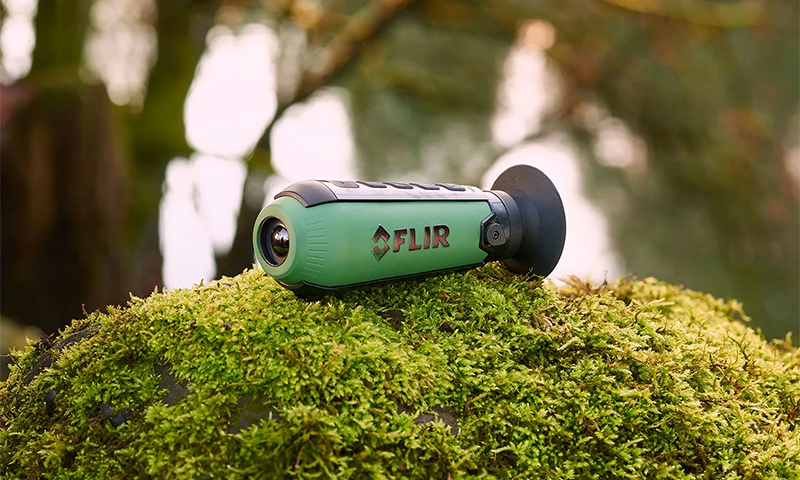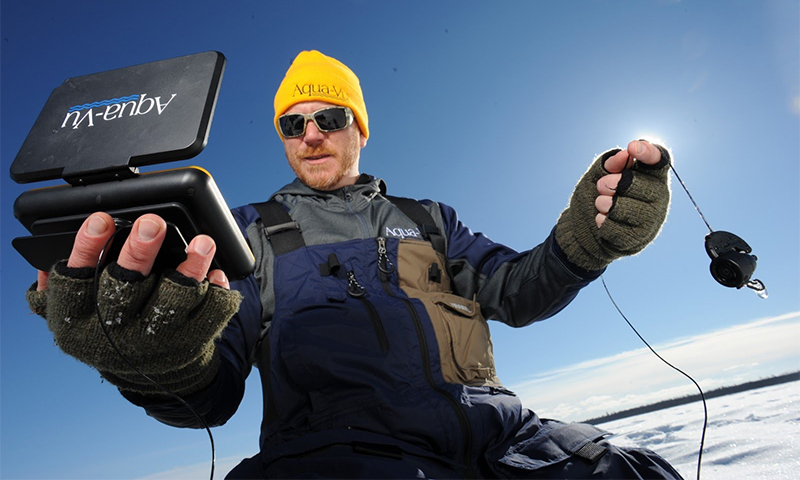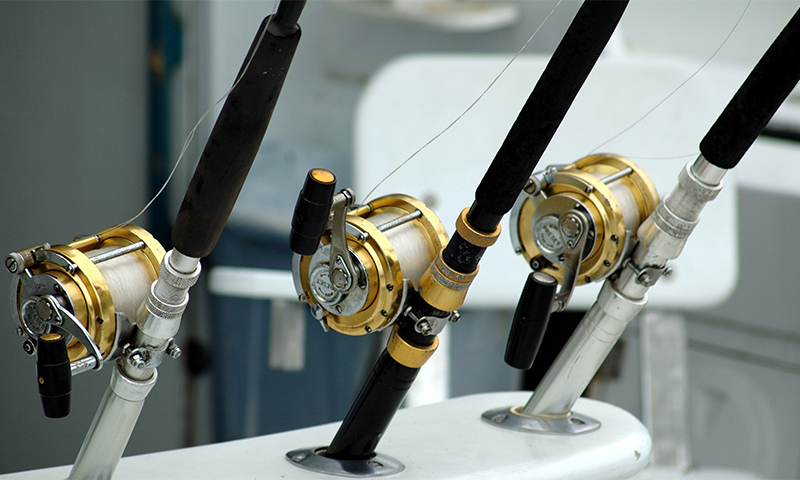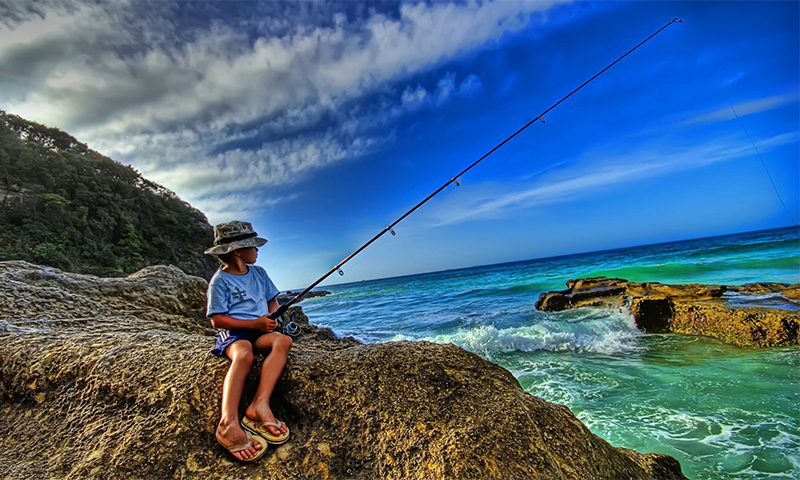A good catch when fishing is the result of careful preparation and use of the right equipment. This includes the use and echo sounder. So called the device for the study of the bottom topography, which is important for choosing a place for casting nets or other devices. Show such devices and directly the fish itself, its size and distance from the boat.
With the echo sounder you can fish in any unfamiliar place, because it allows you to “look” under the water and assess the situation. It is effective even in winter fishing to select the area under the polynya. The material below will teach you to understand the characteristics of the device in order not to overpay for unused functions or not to buy too weak a device for a spacious reservoir.
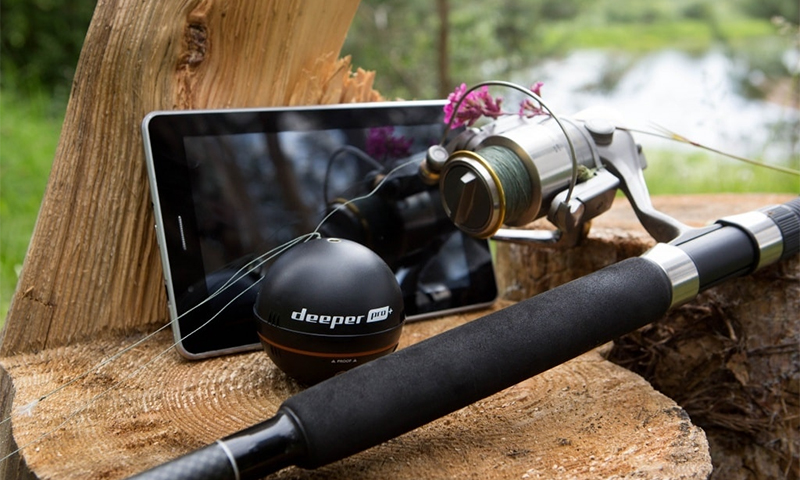
Content:
The best manufacturers of echo sounders - which company to choose
If you are too lazy to study the parameters of the echo sounder and you need a high-quality device for fishing, you can turn to trusted companies:
- Garmin;
- Humminbird;
- Lowrance;
- Deeper;
- "Practitioner".
For those who want specifics, we recommend to look into the detailed ranking of the best echo sounders for fishing. And for the independent selection of the echo sounder according to the parameters, the material below is prepared with a detailed description and a practical part.
The principle of operation and the device sounder
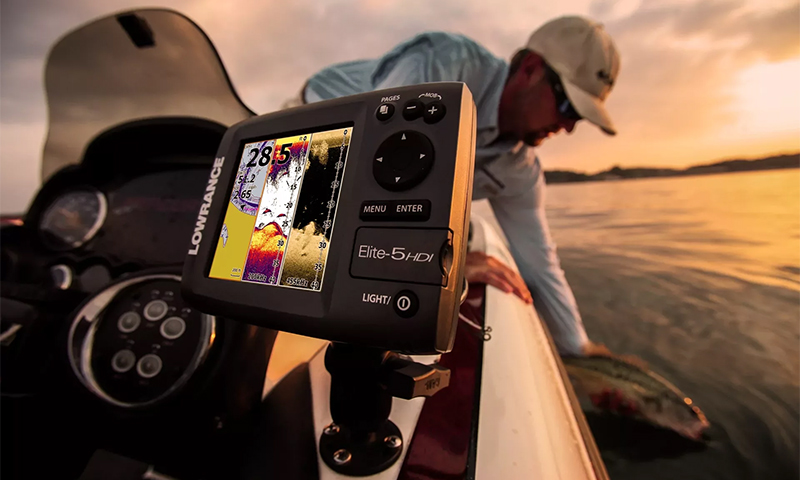
Equipment for recognition of relief and underwater objects is considered to be navigational. Initially, it was used only for military purposes to detect enemy submarines. But now it has become widespread in fishing and traveling by water.
The principle of operation of the echo sounder is based on the creation of electrical pulses that are converted into sound waves emanating from the radiator. It is placed at depth by connecting through a wire or working directly from the hull of the boat. There are autonomous model-floats on the radio.
The emitter sends sound waves in all directions. Faced with obstacles, they beat off and come back, which is picked up by the receiver.
Since the speed of sound in water is constant, you can calculate the passed milliseconds and establish the exact location of the object. This device makes its own on the basis of data pledged. A person does not need to count anything and he gets the finished image on the screen.
Thanks to the echo sounder you can "consider":
1. General relief of the bottom;
2. Cusps;
3. Hollows;
4. The size and number of fish under the boat;
5. Distance to the shoal.
Rays of various frequencies are used to study the marine environment. The higher it is, the clearer the image, but the impact zone. Conversely, the lower the frequency, the wider the capture zone, but the blurred picture due to interference.
The echo sounder has a number of key elements ensuring its work:
1. Housing;
2. Crystal for conversion and tran-ducer;
3. Antenna;
4. Screen;
5. Control buttons;
6. Emitter;
7. Battery.
The image is displayed on the screen in the form of a vertical scan when the vessel is standing, which makes it possible to study the location and depth of the fish. The second mode is a horizontal scan, showing what is happening over a certain period of time.
Types of echo sounders
Portable

They have a small body and easily fit in a special case. Work from batteries or the accumulator.
Compact size allows you to use it on any fishing: from a boat, a boat, in the winter form of fishing. The user can take it from one vessel to another. Allowed to use even with a bridge or shore.
Advantages:
- autonomous work;
- accurately shows the depth;
- moisture-proof housing;
- compact;
- There is a function of increasing the image;
- simple operation;
- a light weight;
- has a temperature sensor;
- Some models show the size of the fish.
Disadvantages:
- if the cord is broken, then a small emitter is difficult to find;
- The screens on portable models are a bit small.
Stationary echo sounders

This equipment is mounted on the hull of a boat or a large boat and is used only on this vessel. The sensor may be located on the bow or the bottom of the vessel. Power is supplied from the network 12 V.
The case of stationary echo sounders is larger, which makes it possible to endow them with various additional functions and an overview screen. Models are used on spacious lakes or in the sea to track shoals of fish at speed.
Advantages:
- high power;
- good image quality;
- a wide variety of beam inclusions in frequency;
- shows not only relief and fish, but also its size, as well as the speed of movement;
- the device keeps a log of temperatures and depths;
- high-quality assembly;
- possibility to enlarge the picture.
Disadvantages:
- 12 V network required for operation;
- It is designed for one vessel and it is problematic to quickly transfer to another (detachment of the hull and emitter attachment).
Sonar selection options

Number of rays
They can be from one to six on the device. By beam is meant the specific frequency of the signal sent by the sonar. The higher the frequency, the clearer the image, but already the area of the area capture.
1. For fishing from a PVC boat without a motor, a single-beam echo sounder at 83 kHz is sufficient.
2. Using the device on a large lake requires an 83/200 kHz two-beam figure in order to see the big picture and know exactly what is happening under the bottom.
3. Three beams (83/200/800 kHz) are suitable for use at sea.
4. Even more (5-6 rays) is required for fishing and hunting for school of fish.
Screen size and quality
What is happening at depth is displayed on a monitor, which can be from 2 to 10 inches. Screens exist in black and white and color. The bigger the screen, the better you can see everything on it.
To assess the situation, it is enough to take a look and act immediately. On a small screen, you will have to zoom in on the image and drag parts of it to figure out whether it is a flock on the screen or one big individual.
If fishing is just a hobby, then you can save money and buy a sonar with a black and white crystal display of 2 inches. This will give an idea of the terrain and show the accumulations of fish.
The wider the bottom capture zone (rays with 83 and 200 kHz), the more the screen is needed (3-4 inches). Hunting for shoals in the sea will require a quick orientation and a large monitor of 7-10 inches.
Estimated Depth
Each echo sounder has its own estimated depth. This is the maximum distance from the surface to the bottom that the sonar can explore under the hull of the boat.
1. For fishing in a small reservoir, 25 m is sufficient.
2. The lakes can have natural depressions and depressions, therefore it is worthwhile to apply models at 35-80 m here.
3. On the high seas, a maximum of 365 meters is useful, although such clefts are rarely seen by fishermen. But large fish can be found in them, so you need to be prepared for such places.
Transmitter power
Image clarity depends on several factors, one of which is transmitter power.
Since sound is sent over long distances and reflecting back from objects, the quality of its signal affects quality. Weak models easily get lost by noise and give errors.
1. If the reservoir is not large, then a 150 W transmitter is enough.
2. Middle lakes require the use of echo sounders of 200-300 watts.
3. Fishing in the sea includes the study of large distances, so the useful value of 500 watts with the possibility of increasing at the peak (occasionally) to 2400 watts.
Viewing angle
It is possible to estimate the range of use of the echo sounder by the characteristics of the viewing angles:
1. 20 degrees will mean quite aim "look" for throwing fishing rods;
2. 45 degrees will allow several fish to be captured into their area of operation at once, which will help with determining the place of casting of frame net gear;
3. 90 degrees will cover the entire bottom and show the location of the whole jamb, as well as the place where you can take it.
Two-beam models can have a combined pattern of exposure and capture two viewing angles at once, which will help the angler to be better oriented. For fishing rods then you should look for models of 16/28 degrees, and for nets 20/60 degrees.
Housing
The assembly of the echo sounder case is very high quality, but it happens in two versions:
1. IP x6 - allows sea splashes to hit the surface and even the penetration of droplets inside. At the same time, the device remains intact. Such models can be mounted on a boat away from the side.
2. IP x7 - a variant of the case protects the device in case of a short fall into the water to a depth of 1 m. This is useful when using portable echo sounders that can accidentally fall out of your hands during pitching or gust of wind.
Screen resolution
Sonars, besides the screen size, also have a resolution (the number of pixels in the monitor, which determines the sharpness of the image). The more such pixels there are, the more detailed the picture. On a low-resolution screen, a flock of fish will look like a spot, and on a high-quality screen, each individual is shown.
1. For fishing with a fishing pole choose monitors with a resolution of 240x240 or 240x270. This gives an idea of the relief and availability of fish.
2. Net fishing or hunting for schools of fish needs detailing in order to properly assess the situation, therefore, screens on 320x320 or 320x480 pixels are bought here.
GPS
This navigation element is embedded in some echo sounders. In addition to direct assistance, it allows you to mark on the electronic map the places of accumulation of catfish or other fish and it is easy to return there again, with a new bait or tackle. This is useful to fans of fishing in large spaces.
Additional functions
The choice of echo sounder depends on the availability of additional functions that can be very useful in certain conditions:
1. Determining the distance to the fish - this is important in the case of the establishment of networks, in order to block the bay or the baited place in time.
2. Determining the size of the fish - such a function will be useful to hunters for specific individuals (large catfish, pike), so as not to waste time and effort on small inhabitants.
3. Temperature sensor - shows the number of degrees at a certain depth. So the user will be able to understand what temperature currents are now prevailing in this area and decide whether to stay here now or whether to change the search zone, because in cold water the fish lies to the bottom or leaves.
4. Flasher - the sensitivity of the equipment allows you to see the tackle and fish swimming towards it, which is very practical for winter fishing.
5. Speed sensor - shows how fast the boat is moving. It will be useful for trolling lovers to evaluate whether predatory fish will keep up with them.
Which echo sounder to choose
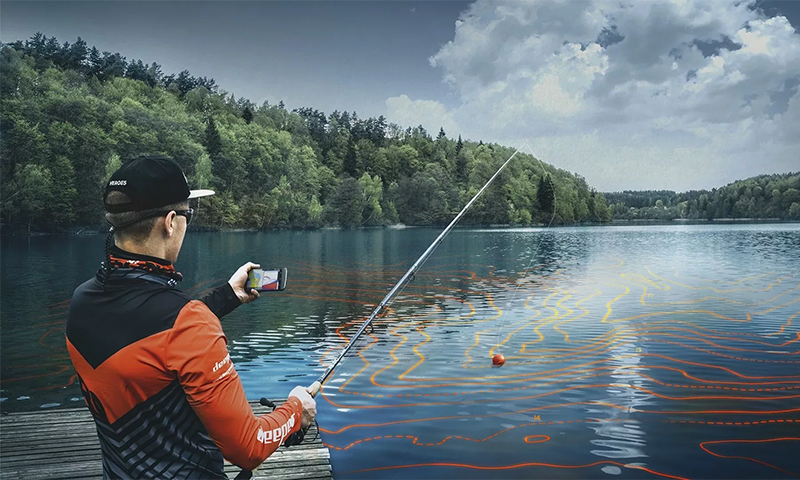
1. Equipment for fishing on a small small reservoir needs the same beam from a portable model, a black and white screen, a 45 degree viewing angle, a depth of 25-30 meters, with a temperature sensor, a screen size of 2 inches, a transmitter power of 150 W, with protection from falling into water Screen resolution of 240x240 pixels.
2. To study the bottom and bottom fishing on a spacious lake, you need a two-beam apparatus, with viewing angles of 16 and 28 degrees, a 4-inch screen, black and white or color, 240x320 resolution, a fish distance gauge, an estimated depth of 100 meters, a temperature sensor and IP x6 splash protection. Transmitter power 200-300 watts. You can choose among portable or stationary devices.
3. To find a fish spot in the winter under the ice, a frost-resistant black-and-white screen with a resolution of 240x320,3 inches, a beam with a view of 20 degrees, an exploration depth of 30-40 m, with a flasher function, and a transmitter power of 150 watts are used.
4. Active search for schools of fish or trolling need a four-beam stationary echo sounder, designed to a depth of 450 meters, with a screen of 7-10 inches, a color image, determining the distance to the fish, GSM module, speed sensor, gauge of fish size, viewing angles 20 / 60/86/55 degrees, with a capacity of 500 watts. Screen resolution from 480x480 pixels.
How much does an echo sounder
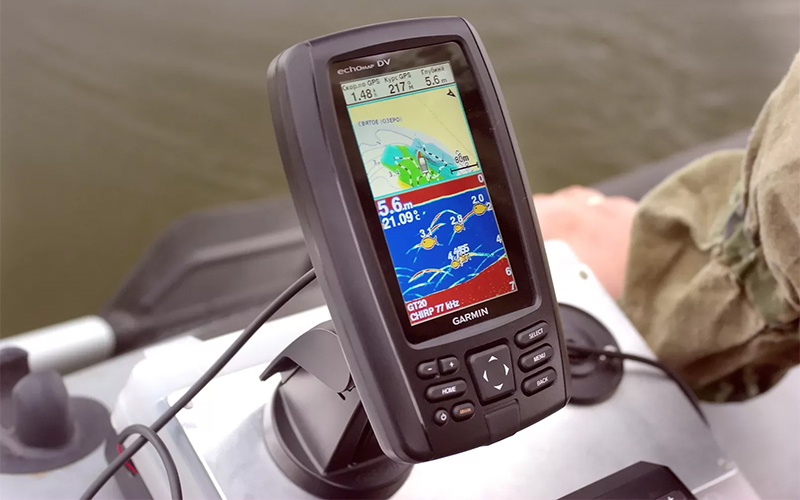
1. The model for a small reservoir and fishing rods is estimated at 4800-6000 rubles.
2. Devices for spacious lakes cost 10,000-18,000 rubles.
3. Sounders for winter fishing buy for 7000 rubles.
4. Trolling on a boat requires a device for 60000-170000 rubles.
It will be interesting to friends too

